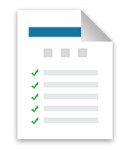Fortunately, sudden cardiac arrest (SCA) in school-age children is rare. Resuscitation attempts at schools are more likely to be made on an adult (staff member or visitor) than a pupil. The presence of an AED at a school therefore provides potential benefit for everyone present at the site.
An additional and important advantage of having an AED prominently located at a school is that students become familiar with them and can learn about first aid, resuscitation and the purpose of defibrillation.
The Department of Education has issued guidance about the installation of AEDs in schools.


